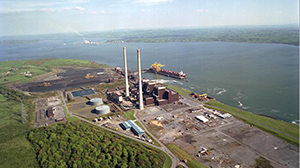VAYU Energy: Supporting Ireland’s renewable agenda
25th September 2015
Converting Moneypoint to sustainable biomass is Ireland’s best renewable option
25th September 2015Denmark’s electricity system for tomorrow
With the smartgrid, Denmark hopes to create the energy system for the future. Peter Markussen of transmission system operator Energinet.dk discusses its potential.
The Danish smartgrid system has two overall objectives, says Peter Markussen of Energinet.dk. He is head of ancillary services at the national transmission system operator for electricity and natural gas.
The first objective is to create flexibility in the market due to the country’s high levels of renewable energy. The other is to have a very innovative, low cost energy system in Denmark. Added to that is the potential to create new business models that may be exported to other countries in the EU or globally.
The Danish Energy Strategy was developed in 2010 with the targets of 50 per cent of traditional electricity consumption covered by wind power by 2020; all electricity and heat to be based on renewable energy by 2035; and the total energy supply, including transport and industry, to be based on renewable energy by 2050.
It was the government’s marketing strategy that formed the beginning of the smartgrid plan – the findings were made public in 2013 with the project starting the following year. A non-profit enterprise owned by the Danish Climate and Energy Ministry, Energinet.dk is tasked with:
• maintaining both the short-term and long-term security of electricity and gas supply;
• developing the main electricity and gas transmission infrastructure for Denmark;
• calculating the environmental impact of the overall energy system;
• creating objective and transparent conditions for a competitive energy market;
• monitoring energy competition;
• carrying out coherent and holistic planning which takes into account future transmission capacity requirements and long-term security of supply; and
• supporting eco-friendly power generation and the development of green energy production technologies.
Denmark’s strategic plan is that in two years’ time the foundation of the smartgrid will be in place, Markussen says. The benefits of the smartgrid include savings in grid reinforcement and reserve capacity, the development of new market models for cost-efficient green energy with high security of supply, and the development of new products for exports and job creation.
The overall smartgrid plan “consists of around 15 different projects,” explains Markussen. They cover five different areas – regulatory barriers, consumer focus, distribution, new technology development and market set-up.
One example he refers to is Nikola, which is a research and demonstration project for intelligent electrical vehicle integration. It focuses on the synergies between the vehicle and the power system in a bid to influence the timing, rate and direction of the power and energy exchanged between the battery and the grid.
Through simulations and in-field testing, Nikola aims to explore how this development can be used to bring value to the power system, the electric vehicle and society.
Barriers
Markussen describes the process of formulating the smartgrid as “a long evolution”. He remarks: “One of the main challenges we see at the moment is that smart participants find it hard to develop these new business models because there are regulatory barriers for moving along with ideas.” Integrated demand side is “crucial” for Denmark. He says: “What we see from a lot of different demonstration projects, demand really is flexible; it is possible.
“We just need to find the right incentives to make sure that consumers also take part. There are a lot of market barriers. It takes time to change because in Denmark, we need to change the law in order to remove these,” Markussen continues.
“Then when we look at the information and communications technology equipment; it is a key enabler. It is there – it is not a barrier. We need also to look at the long-term market development with some kind of real time market model.”
However, he also says that the TSO is not responsible for developing the market.
“We just put up the framework and then make it interesting for private investors to find new business models and finding new ways for creating the flexibility.”
Future
What the future holds, Markussen admits is unclear. Discussing the process of changing the value chain, he says: “Five years ago, I don’t think we would have known that flexibility would be as important as it actually is.
“Ten years ago, it was about production, delivering the energy but also the flexibility and then the consumer just used the electricity,” he reflects.
Markussen concludes that the smartgrid is central to the value chain and makes the consumer’s consumption much more focused. With this concept, the consumers could actually be the people providing the electricity at the start of the value chain.
The Ecogrid island of Bornholm
On the island of Bornholm in the Baltic Sea, there is also an Ecogrid test site. Interconnected with the Nordic power market, it has a high variety of low carbon energy sources and several active demand and stationary storage options. It supports the need for direct control options on a very short time scale and is an example of a real-time market that can be implemented in the context of existing power markets.
Operated by the local municipal owned Distribution System Operator (DSO) Ostkraft, it has research, development and demonstration infrastructure and full scale test laboratory. The project demonstration phase has just been finalised.




